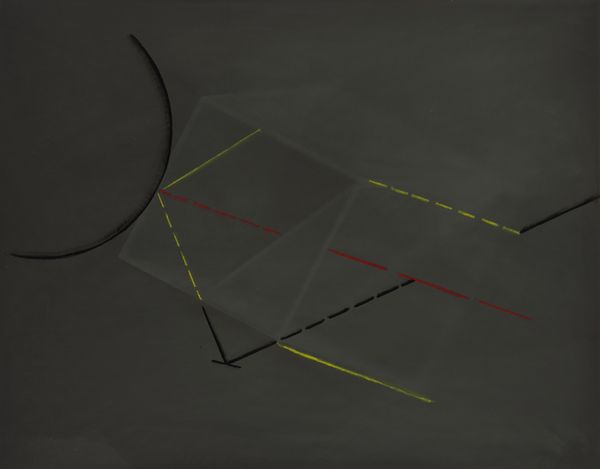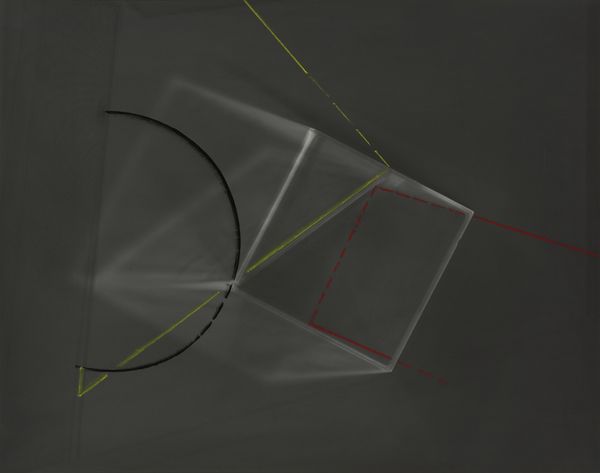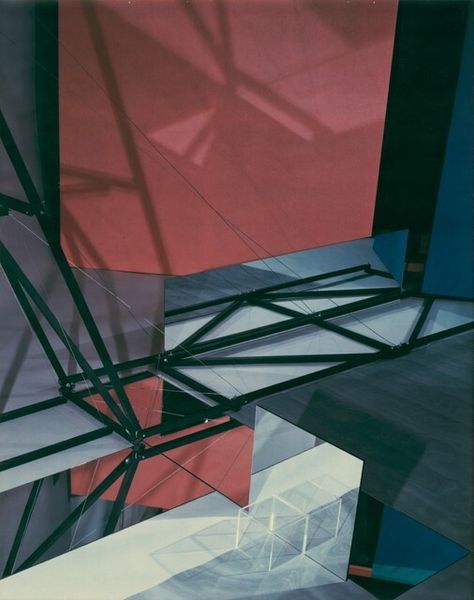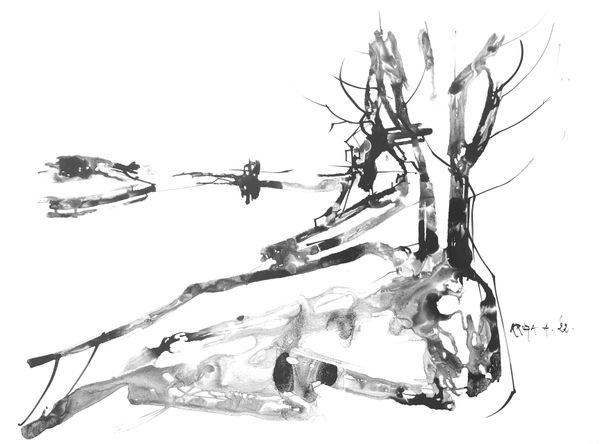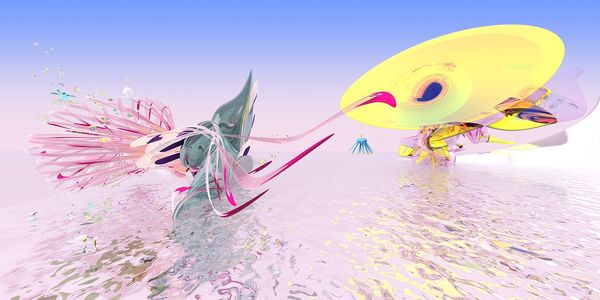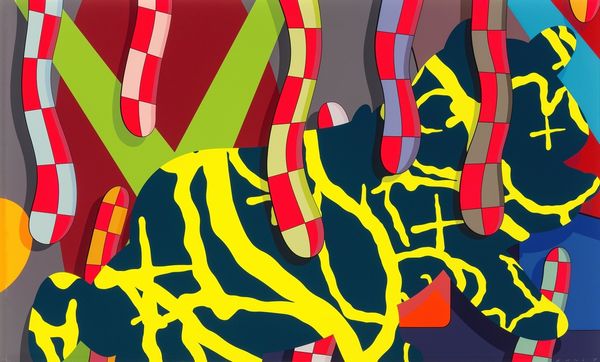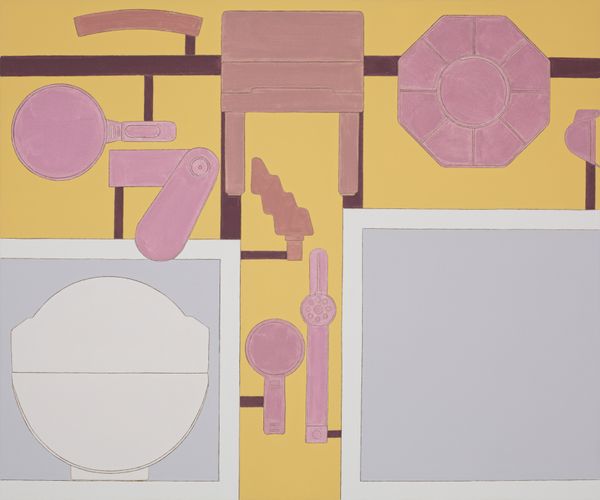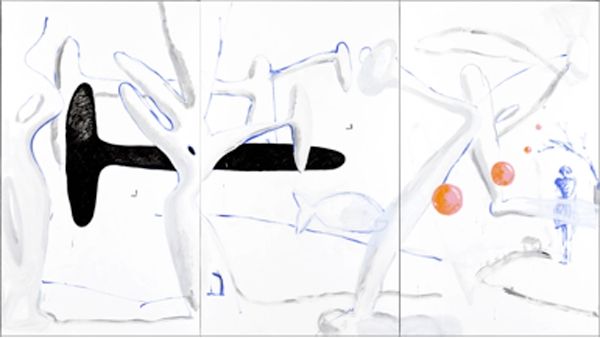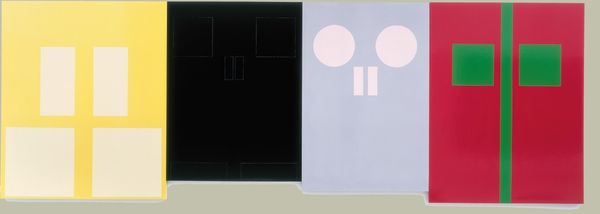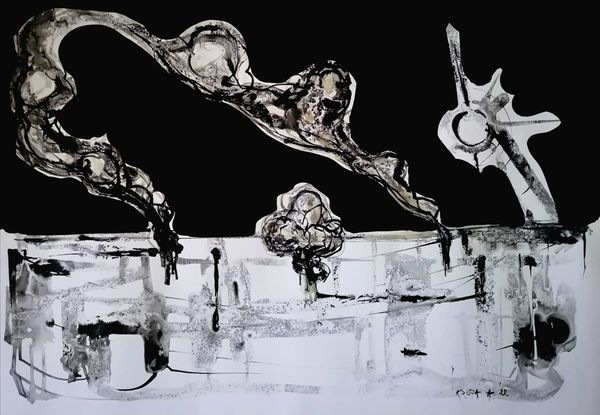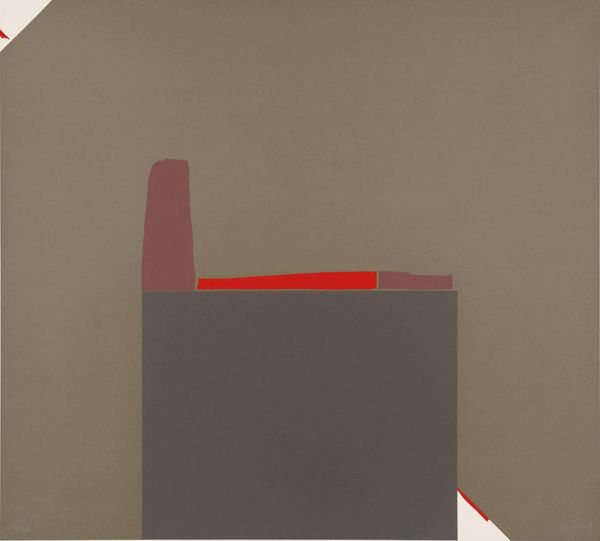
Dimensions: support: 2440 x 2135 x 51 mm
Copyright: © Fiona Rae | CC-BY-NC-ND 4.0 DEED, Photo: Tate
Editor: Here we have Fiona Rae's 'Night Vision' from the Tate collection. I’m struck by its complex layering of shapes and gestures against the dark background. What do you make of the composition here? Curator: Notice the interplay of hard-edged geometric forms with fluid, almost calligraphic brushstrokes. The painting appears to negotiate a space between calculated structure and spontaneous expression. How does that tension speak to you? Editor: It's quite dynamic, like a system in motion. I hadn't considered that balance. Curator: Indeed, the juxtaposition of these elements generates a visual rhythm. The carefully chosen palette further enhances this dynamism. A successful demonstration of form. Editor: I see it now! Thanks for pointing that out. Curator: My pleasure.
Comments
Join the conversation
Join millions of artists and users on Artera today and experience the ultimate creative platform.
tate 6 months ago
⋮
Rae’s paintings push abstraction to the edge of figuration. She studied Fine Art at Goldsmith’s College London (1984-7) and participated in Freeze, the seminal exhibition of young British artists (subsequently known as yBas) organised by Damien Hirst (born 1965) in London’s Docklands in 1988. Her paintings of the late 1980s comprise rows of miniature pictures, each made up of a combination of colours, forms and brushstrokes, against a neutral ground. In these works, the graphic qualities of individual pictures result in the appearance of a pictograph, each one resembling an unknown letter or symbol. This sense of meaning is undermined by the evident materiality of the paint. In the early 1990s she expanded and developed these structures to cover a single canvas. In such paintings as Untitled (yellow) 1990 (Tate T06482) and Untitled (grey and brown) 1991 (Tate T06481), the background is made up of blocks of a variety of geometric and organic forms in monotone colours, usually identified in the title following Untitled. These monotone sections provide the stage for a virtuoso performance of painterly mark-making. Dribbles, squiggles and smudges overlay wider bands of gestural streaks made using a brush loaded with more than one paint colour. The canvas may be turned several times after the application of paint, resulting in drips travelling in different directions. Finely delineated lines in a variety of styles trace under and across areas of paint smeared with a finger tip. On the same canvas, thick patches of impasto contrast with Pollock-type spatters and crude graffiti strokes depicting no recognisable form. Rae’s paintings recall aspects of the work of such American Abstract Expressionists as Willem De Kooning (1904-97) and Cy Twombly (born 1928) and German painters Hans Hofmann (1880-1966) and Georg Baselitz (born 1938), combined with more contemporary cultural references. She has said: ‘I have an unhierarchical approach in that any one kind of painting language is potentially as interesting as another. And in the work itself nothing takes precedence. I guess that’s what you call democratic.’ (Quoted in Fiona Rae 1996, p.24.)
